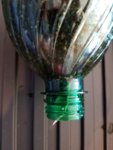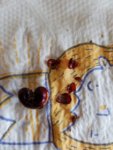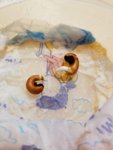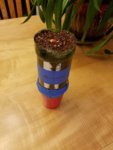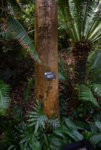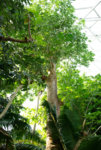Hi all...new member Brian here. I've started a project recently that I'm hoping will be a retirement hobby. I found seeds for all 8 members of the genus adansonia and I'm trying to grow them into bonsai 
OK, bonsai may be a loose term here. They'll definitely be kept container bound and I fully intend to style the trees, but I may/may not put them into bonsai pots. That parts so far off I'll defer decisions til then!
For now, since I'm not getting any younger, I'd like to grow them out as quickly as I can. My limitations are that they have to winter indoors and I do not have greenhouse space. Summers here (Kansas City area) are plenty long and hot and I have enough space to summer them outside no problem. These limitations are something I image some of you are used to dealing with.
My other limitation, is that I'm sometimes not too bright I started this project in September...not exactly spring in this neck of the woods. I did think it through...my thought processes after a lot of reading was that germination rates seem low and germination times sometimes very long. I figured I'd kill a number of seeds (I did) before I hit upon a workable recipe. If some sprouted middle of winter, they'd be warm inside and just have a few extra months to grow before next fall when they went dormant.
I started this project in September...not exactly spring in this neck of the woods. I did think it through...my thought processes after a lot of reading was that germination rates seem low and germination times sometimes very long. I figured I'd kill a number of seeds (I did) before I hit upon a workable recipe. If some sprouted middle of winter, they'd be warm inside and just have a few extra months to grow before next fall when they went dormant.
Whelp, I hit upon a viable and high yield germination process much quicker that I thought I would! I've managed 100% germination in 3-5 days for 6 of the species...and 0% so far for grandidieri and suarezensis...sigh...My fumble fingers killed a couple in potting but I currently have 9 robust seedlings and am still trying to germinate 2 species.
...and now my problem and what I hope you clever people can offer advice on.
I know about the tap root and that the root spread isn't nearly as wide as deep...in fact, baobabs don't seem to have many fine roots at all. My thinking, to save space and optimize plant health, was to plant the seedlings in tall, thin bottles. 1 liter pop bottles to be precise! I cut the very bottoms off and filled them with a good soilless seedling mix and left top off for drainage. I figured the clear sides would let me see if the roots did speak wider than I was thinking and the open bottom would let me watch for the tap root to pop out rather than it getting all coiled up as they tend to in normal pots.
That all worked! But much sooner than expected!! The pictures are of the first baobab I sprouted on September 12. The bottle is a 1 liter soda bottle. Soil surface to bottle top is ~9". You can see the tap root poking out the bottom. The top of the plant is only 3" tall...clearly a lot more under soil growth than top soil growth going on.
This plant in only 6 weeks old...and now I need to start thinking of other options. What do people think?
Should I move them to something deeper...which will be traumatic since I'll need to cut them out of the bottles. I thought about going with 2 liter bottles but that really only gets them a few more inches. I don't know how deep they really want to go Any thoughts on deep but narrow potting containers? Thoughts on how deep is "deep enough"? I'm trying to grow 2 of each species for now so cheapish options preferred
Any thoughts on deep but narrow potting containers? Thoughts on how deep is "deep enough"? I'm trying to grow 2 of each species for now so cheapish options preferred 
I could leave them be. I was hoping this would get them through the winter when I could move them to bigger arrangements and put them outside. Once they get into a "normal" winter dormancy cycle I have places in the house I can overwinter without problem. Until then I need to keep them close together to keep them under lights. I would expect the part of the root poking out the bottom would dry up and die off. I worry though that I keep the bottles in a tray that catches the seepage and any root poking out the bottom would be resting in standing water if I'm not really careful. I worry then about rot
I also worry a bit that roots that do make it to the bottle edge will be exposed to light. So far, only the perrieri have grown roots like that. They are kept in a bight southern window as well as under blue/red led lights...they are getting pretty high light levels so any roots that make it to the bottle edge will be exposed. Not sure if that's a problem or not.
Any other thoughts/suggestions to save me from myself?? From all that I read about low germination rates and long germination times I was really thinking I would be lucky to get something growing by spring but here I sit less than 2 months into this facing and already facing a new set of challenges.
The last picture, by the way, is a. perrieri on the left and a. gregori on the right. The perrieri is 4 weeks old. The gregori is 6 weeks. They sit right next to each other so the differences you see are more growth habit than environment.
Sigh...too many words...sorry about that!
OK, bonsai may be a loose term here. They'll definitely be kept container bound and I fully intend to style the trees, but I may/may not put them into bonsai pots. That parts so far off I'll defer decisions til then!
For now, since I'm not getting any younger, I'd like to grow them out as quickly as I can. My limitations are that they have to winter indoors and I do not have greenhouse space. Summers here (Kansas City area) are plenty long and hot and I have enough space to summer them outside no problem. These limitations are something I image some of you are used to dealing with.
My other limitation, is that I'm sometimes not too bright
Whelp, I hit upon a viable and high yield germination process much quicker that I thought I would! I've managed 100% germination in 3-5 days for 6 of the species...and 0% so far for grandidieri and suarezensis...sigh...My fumble fingers killed a couple in potting but I currently have 9 robust seedlings and am still trying to germinate 2 species.
...and now my problem and what I hope you clever people can offer advice on.
I know about the tap root and that the root spread isn't nearly as wide as deep...in fact, baobabs don't seem to have many fine roots at all. My thinking, to save space and optimize plant health, was to plant the seedlings in tall, thin bottles. 1 liter pop bottles to be precise! I cut the very bottoms off and filled them with a good soilless seedling mix and left top off for drainage. I figured the clear sides would let me see if the roots did speak wider than I was thinking and the open bottom would let me watch for the tap root to pop out rather than it getting all coiled up as they tend to in normal pots.
That all worked! But much sooner than expected!! The pictures are of the first baobab I sprouted on September 12. The bottle is a 1 liter soda bottle. Soil surface to bottle top is ~9". You can see the tap root poking out the bottom. The top of the plant is only 3" tall...clearly a lot more under soil growth than top soil growth going on.
This plant in only 6 weeks old...and now I need to start thinking of other options. What do people think?
Should I move them to something deeper...which will be traumatic since I'll need to cut them out of the bottles. I thought about going with 2 liter bottles but that really only gets them a few more inches. I don't know how deep they really want to go
I could leave them be. I was hoping this would get them through the winter when I could move them to bigger arrangements and put them outside. Once they get into a "normal" winter dormancy cycle I have places in the house I can overwinter without problem. Until then I need to keep them close together to keep them under lights. I would expect the part of the root poking out the bottom would dry up and die off. I worry though that I keep the bottles in a tray that catches the seepage and any root poking out the bottom would be resting in standing water if I'm not really careful. I worry then about rot
I also worry a bit that roots that do make it to the bottle edge will be exposed to light. So far, only the perrieri have grown roots like that. They are kept in a bight southern window as well as under blue/red led lights...they are getting pretty high light levels so any roots that make it to the bottle edge will be exposed. Not sure if that's a problem or not.
Any other thoughts/suggestions to save me from myself?? From all that I read about low germination rates and long germination times I was really thinking I would be lucky to get something growing by spring but here I sit less than 2 months into this facing and already facing a new set of challenges.
The last picture, by the way, is a. perrieri on the left and a. gregori on the right. The perrieri is 4 weeks old. The gregori is 6 weeks. They sit right next to each other so the differences you see are more growth habit than environment.
Sigh...too many words...sorry about that!


